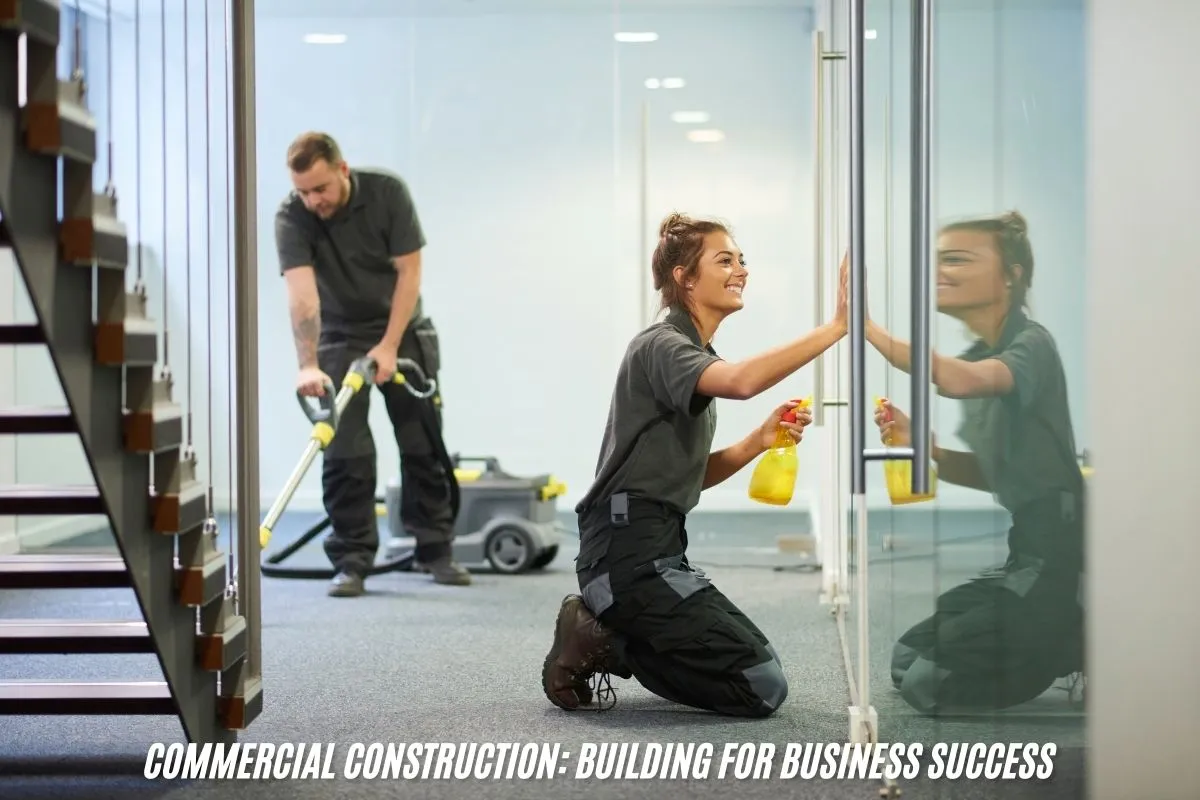When we think about commercial construction, we often envision tall office buildings or bustling shopping centers. But commercial construction is far more complex than simply putting up walls and creating interiors. It involves designing spaces that boost productivity, inspire collaboration, and even strengthen a business’s brand identity. Building for business means balancing function, aesthetics, and safety, while also making room for sustainability and technological innovation.
In this article, we’ll explore the essential elements of commercial construction, from planning and project management to green building practices and advanced technology. Whether you’re a business owner thinking about a new office, a contractor working in the field, or simply interested in the construction industry, these insights can guide you through the world of commercial construction.
Understanding the Role of Commercial Construction
Commercial construction refers to building projects aimed at serving businesses rather than individuals. This can include office buildings, hotels, shopping malls, and healthcare facilities. Each of these spaces has unique needs, and the key to successful commercial construction is creating environments that align with a business’s goals.
As Ken Reich, CEO of DPR Construction, puts it, “Commercial construction is more than just building structures; it’s about creating functional and inspiring spaces that drive business success.” This underscores the need for a thoughtful approach to design, where every aspect of the structure should serve the people who use it daily.
1. Planning and Project Management: The Blueprint for Success
In commercial construction, careful planning and management are essential. From setting a realistic budget to coordinating teams of workers, every phase of the project requires detailed oversight. Experienced project managers know that successful construction hinges on good coordination and clear communication.
Chuck Schmitt, CEO of Skanska USA Building, emphasizes the importance of project management, stating, “The key to successful commercial construction lies in effective project management. By carefully planning, coordinating, and executing each phase of the project, we can deliver exceptional results on time and within budget.”
Every commercial project begins with a solid plan, but the unpredictable can still happen. I remember when a friend in construction told me about a sudden material shortage that disrupted one of their projects. By keeping communication open and having a backup plan, they managed to stay on track without compromising quality.
Studies on Project Management also support this approach. “The Role of Technology in Construction Project Management” highlights how tools like scheduling software and communication apps streamline projects and prevent costly delays. These tools can be a game-changer for teams juggling multiple aspects of a large-scale build.
2. Choosing Sustainable and Green Building Practices
Today, sustainability is a core consideration in commercial construction. Not only do eco-friendly practices reduce a building’s environmental footprint, but they also create healthier spaces for employees and clients.
“Sustainability is no longer a luxury in commercial construction; it’s a necessity,” explains Rick Fedrizzi, CEO of the U.S. Green Building Council. By incorporating green building practices, we can reduce environmental impact and create healthier, more efficient buildings.
Green building goes beyond simply using eco-friendly materials; it also includes energy-efficient lighting, water-saving fixtures, and renewable energy sources like solar panels. According to the study on Green Building and Sustainable Construction Practices, buildings designed with sustainable practices in mind can lower operational costs by up to 20%. This approach not only benefits the environment but also reduces costs for businesses in the long run.
One personal story that sticks with me involves visiting a newly constructed green office. I felt the difference immediately; the air was fresher, and there was an inviting natural light throughout. It’s a reminder that green buildings can also create a more enjoyable work environment.
3. Integrating Technology: The New Age of Construction
Technology is transforming commercial construction in exciting ways. From virtual design software to drones and 3D printing, these tools make it easier to visualize, design, and construct buildings with precision and efficiency.
Dan Ryan, CEO of Ryan Companies US, Inc., believes in the power of technology, saying, “By embracing innovative tools and techniques, we can improve productivity, enhance safety, and deliver higher-quality projects.” One of the most impactful tools is Building Information Modeling (BIM), a type of software that allows builders to create 3D models of a project before construction even begins.
Research on the Impact of Building Information Modeling (BIM) highlights its ability to improve collaboration among architects, engineers, and builders. BIM helps teams spot potential issues early on, which can prevent costly changes during construction.
I recall a friend who’s an architect telling me how BIM helped their team visualize a project more clearly. They caught a design flaw before construction started, saving thousands of dollars and avoiding project delays. It’s amazing how a tool can bring peace of mind and efficiency to the construction process.
4. Prioritizing Quality and Precision in Every Detail
In commercial construction, the smallest details can make a huge difference. From the foundation to the finish, quality is key to creating a building that’s durable and functional.
Roger Kulick, CEO of Turner Construction Company, puts it well: “In commercial construction, every detail matters. From the foundation to the finishing touches, precision and quality are paramount.” This focus on quality is essential because commercial buildings endure heavy daily use and need to meet strict safety standards.
One overlooked factor in quality is the joinery techniques used, especially in structural components. For instance, joinery methods like mortise and tenon or dovetail are incredibly strong and add longevity to wooden structures. They may seem minor, but these details contribute significantly to a building’s durability and long-term performance.
5. Overcoming Labor Challenges in Commercial Construction
One of the major challenges facing the construction industry today is the shortage of skilled labor. According to the study on Labor Shortages in Construction, this shortage can lead to delays and higher costs, impacting the overall success of a project. The construction industry needs skilled workers who understand the intricacies of commercial projects, from carpentry to project management.
In response to this issue, some companies are turning to technology to fill the gap. Automation, for instance, can help complete repetitive tasks, while digital tools can enhance worker training and productivity. It’s an ongoing challenge, but technology is playing a critical role in bridging the skills gap.
6. Collaboration: The Key to Bringing Vision to Life
Successful commercial construction is a team effort. Architects, engineers, contractors, and clients all play a role in bringing a project to life. Open communication ensures that everyone is aligned and that potential issues are addressed early on.
Steve Hollinger, CEO of Mortenson, says it best: “By working closely with architects, engineers, subcontractors, and clients, we can ensure that everyone is aligned and committed to achieving project goals.” This collaborative approach allows teams to anticipate and solve problems before they escalate, saving both time and resources.
Building for Business: A Vision of the Future
The future of commercial construction is bright, with more emphasis on sustainable practices, precision, and innovative technology. With these advancements, commercial buildings are not only becoming more functional but also more aligned with the goals and values of the businesses they house.
For any business looking to build or renovate, it’s important to partner with a construction company that values quality, sustainability, and collaboration. By doing so, businesses can create spaces that inspire productivity, elevate brand image, and contribute to a greener future.
Conclusion
Commercial construction is about more than bricks and mortar. It’s about crafting spaces that foster success, inspire employees and welcome clients. By focusing on quality, sustainability, and innovation, today’s builders are shaping a better future for businesses and the people who work in them. Whether you’re starting a new construction project or looking to renovate, choosing the right approach can make all the difference in creating a space that truly supports your goals.
With the insights from experts and studies, you’re now well-equipped to make informed decisions in your commercial construction journey. It’s not just about building for today but for the years to come, making the right choices now is a lasting investment in your business’s future.









